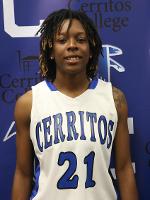According to webmd.org, the top 10 most common injuries range from runner’s knee to a torn Achilles.
Sophomore basketball player Kennedi Cooper has had 40 percent of them.
“My basketball injuries have affected my daily life. I constantly have aches and pains. Pain pills are a regular thing for me,” Cooper said.
“I can’t stand or walk around for long periods of time,” she added.
Cooper has suffered from a groin pull, hamstring strain, concussion and torn ACL.
By definition, tearing an ACL means “an anterior cruciate ligament injury is the over-stretching or tearing of the anterior cruciate ligament in the knee,” according to umm.edu
According to Cooper, no pain can compare to the tearing of her ACL.
“The surgery was the worst pain I’ve ever felt. I was in bed for about a week, I didn’t want to get out of bed because of how bad the pain was,” she said.
The injury can also occur partially and completely.
Cooper suffered her most overwhelming injury in the summer heading into her junior year of high school.
Despite the injury happening so long ago she still remembers it like it was yesterday.
“My ACL tear I jumped up to grab the ball on a steal and came down on someone’s foot,” she recalled.
She added, “I actually didn’t find out I tore my ACL until four months later, I kept playing on it and tearing it until it was completely torn.”
Fortunately, Cooper returned from her life-changing injury just six months after suffering it, not including the four months in which she played on it.
Most commonly athletes are out of action for their respective sports between 8-12 months.
Throughout the season her head coach Trisha Raniewicz had to scold Cooper for not giving 100 percent on defense.
Reason being Raniewicz felt she could give it so much more.
“In my experience, there is nothing that trumps a person’s internal motivation to be their best at all times,” Raniewicz said.
“Carrying that mindset in all areas from pratice to the game requires discipline and consistency and is something I’ve always felt [Cooper] is capable of doing day in and day out,” she added.
Raniewicz has never been shy in saying that she is constantly on her point guard because she can compete at the highest level possible if she continues to work her hardest.
“I think [Cooper] has the ability to help a program right away. It is going to be imperative that she shows her new coaching staff that she is on board with their philosophy and willing to do all she can to help the team win.
“In addition, I am hopeful that she will be able to use these next two years of playing to further her educational goals,” Raniewicz added.
Cooper looks to continue her basketball career at the four-year college level as she currently is mulling offers from Avila University (Kansas City, Missouri) and Missouri Valley College.

